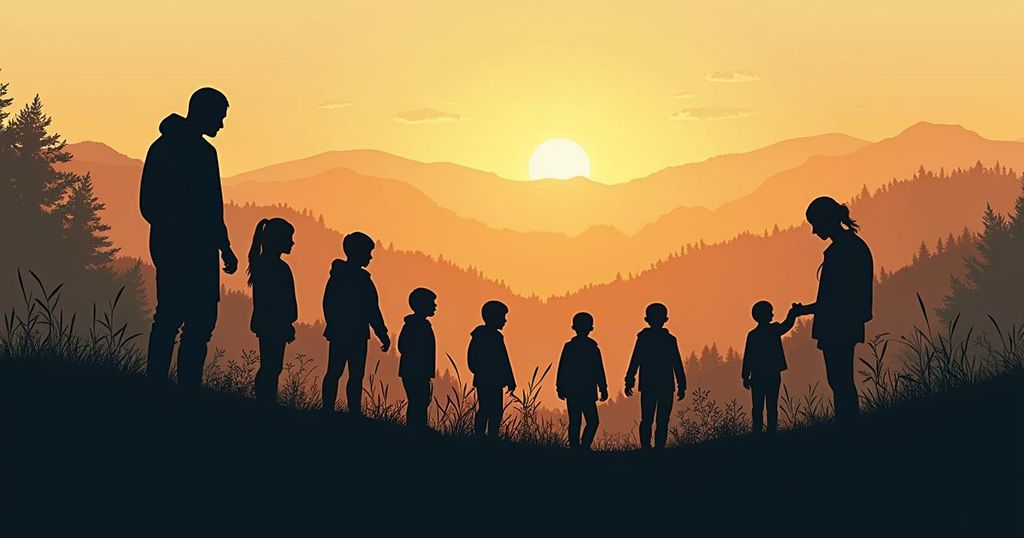Resilience and Resistance: Queer Appalachians in the Face of Stereotypes

The article discusses the misrepresentation of Appalachia, particularly regarding queer and trans individuals, in national discourse. It explores the impact of JD Vance’s narrative in “Hillbilly Elegy” and critiques the broader media’s neglect of the region’s complexities, emphasizing community resilience and the importance of local pride events amidst systemic challenges.
This year’s electoral season has unfortunately revived discussions around deeply entrenched stereotypes of Appalachia, particularly as national media continues to overlook the diverse realities of its communities. This lengthy article highlights the challenges faced by queer and trans individuals in Appalachia, their resilience, and community-building efforts in the face of continual misrepresentation and neglect. The recent selection of JD Vance as Donald Trump’s running mate reignited debates about his portrayal of the region in his memoir “Hillbilly Elegy,” which many argue perpetuates damaging narratives about Appalachians as universally poor, white, conservative, and uneducated. Such stereotypes erase the vibrant existence of queer, trans, and marginalized individuals across the area. The author describes personal experiences in navigating feelings of despair as these narratives overshadow the true diverse fabric of rural queer lives, emphasizing the lack of substantive national media concern, particularly during crises such as Hurricane Helene. Community initiatives, such as the Appalachian Trans Music and Arts Festival and local pride events, showcase the beauty of queer life in rural settings and highlight the collective joy and resistance against anti-trans policies. These grassroots activities foster meaningful connections among diverse populations, enabling them to claim public spaces for their identities despite continuing challenges. Pointing to local pride events and grassroots gatherings as expressions of resilience, the author details heartwarming visuals from these occasions that reinforce community bonds and resistance against systemic oppression. Through these experiences, the article portrays a regional identity that pushes back against reductive media narratives, illustrating how queer Appalachians refuse to be defined by external judgments but instead strive for a future where their communities can thrive together. In conclusion, this piece serves as a stirring reminder of the resilience and unity of queer, Black, Brown, and Indigenous populations within Appalachia, highlighting the need to uplift their voices and experiences. Collective joy, a determination to resist, and a commitment to community care emerge as the defining characteristics of these Appalachian peoples who refuse to be marginalized by national elections or media narratives. Ultimately, it emphasizes the imperative of solidarity, mutual aid, and the enduring importance of community in confronting societal obstacles and celebrating diversity.
The article critiques the pervasive stereotypes surrounding Appalachia, especially as they pertain to the region’s representation in national media. It arose in response to Donald Trump’s appointment of JD Vance, whose works have been associated with a narrow portrayal of Appalachian identity as homogeneously conservative and impoverished. The author argues that such narratives are harmful and misleading, neglecting the realities of queer, trans, and non-white inhabitants of the hills. This piece contextualizes the ongoing struggles the Appalachian queer community faces, particularly amidst natural disasters like Hurricane Helene, emphasizing their agency and communal support networks in the wake of external neglect and misrepresentation.
The article encapsulates the struggle against harmful stereotypes faced by queer Appalachians, arguing for the recognition of the region’s rich diversity. It underlines the importance of community resilience, highlighted by initiatives like local pride marches and festivals. Despite national media’s tendency to overlook or misrepresent their realities, it reveals that queer individuals in Appalachia continue to thrive, support one another, and actively resist systemic oppression, all while forging their identities in a region steeped in both adversity and beauty.
Original Source: www.them.us







